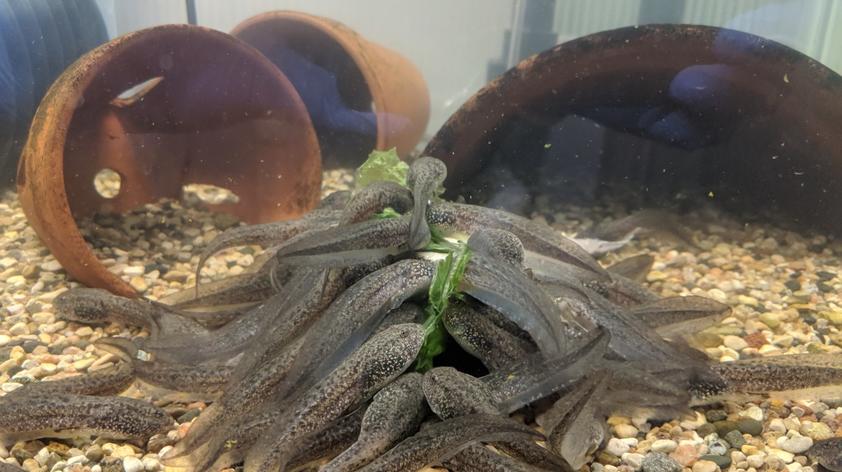
It Takes a Village; Using nationwide collaboration to save an endangered species
The success of any conservation program relies not only on the staff within the program but on the incredible team of other zoological institutes and conservation programs that are dedicated to preserving and rehabilitating endangered populations. This holds true for ICR’s mountain yellow-legged frog program.
Starting in 2017, the mountain yellow-legged frog team has welcomed the expertise and guidance of the amphibian conservation research team at Omaha’s Henry Doorly Zoo and Aquarium. The program at Henry Doorly has invaluable experience with a variety of amphibian conservation and reintroduction programs, including the Panamanian golden frog, dusky gopher frog and now the mountain yellow-legged frog.
In 2017, 83 frogs were transferred to Omaha from ICR for breeding and housing and the following year, 2018, 196 tadpoles were shipped to Omaha for head-starting, eventual breeding and housing.
This year, 2019, was a very successful year for Omaha. Eighty-seven tadpoles were produced from the adult cohort they raised up last year and the tadpoles that were shipped to Henry Doorly metamorphosed and were sent back to ICR to participate in reintroduction studies.
In addition to their assistance with rearing and breeding, the team at Henry Doorly Zoo is also aiding with ICR’s numerous research projects. This year they’ve helped set up and examine hibernation protocols for metamorph frogs and they’ve assisted in examining assisted reproductive technologies (ART) and developing a protocol to induce spermiation in reproductively receptive adult males.
In April and May of this year, mountain yellow-legged frog research coordinator, Leah Jacobs traveled to Omaha to examine using hormones to induce spermiation in adult male mountain yellow-legged frogs. Omaha has been using ART and hormones to induce spermiation and eventual IVF on a variety of endangered amphibians. Using their knowledge and expertise coupled with our previous research regarding hormone use in mountain yellow-legged frog males we were able to successfully induce spermiation and take a huge step forward in developing a protocol for hormone induced breeding.
This research could have enormous implications for improving the success of our captive program and just one of the ways that our collaborations with outside organizations have furthered our goal to produce successful captive breeding populations.
Following the success of the tadpole and adult frog transfers and Omaha’s success with breeding, we shipped an additional 110 recently produced tadpoles from ICR to Omaha for head-starting and we look forward to what Omaha will be able to produce during next year’s breeding season.
The help and experience of other zoological institutes is invaluable in this field. The mountain yellow-legged frog team looks forward to future research and correspondence with Henry Doorly and other zoological institutes intent on saving endangered amphibian species.













